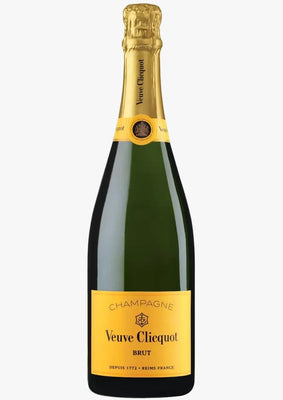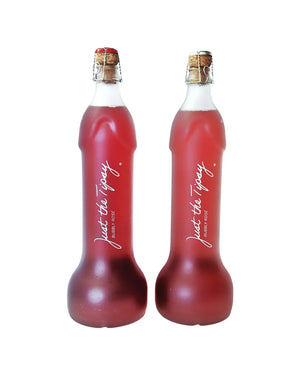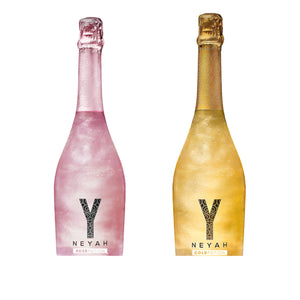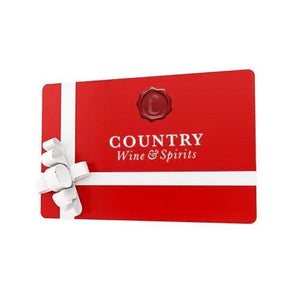Available: Mon - Fri 8am - 7pm PST & Sat 8am - 1pm PST
Spirits
Whether at a brick-and-mortar store or an online spirits store, that’s an easy one: there isn’t a difference. Spirits and liquor are the same kind of alcohol - one that has gone through a distillation process. Distillation increases the alcohol by volume (ABV) of a fermented liquid. A spirit must have at least 20% ABV and have no added sugar to qualify for the name “spirit” or “liquor.” Both words were incorporated into English during the 16th Century.
There are a couple of legends about the term “spirit” with regard to alcohol. Many point to early distillation in the Middle East. An ancient eyeliner, al-Koh’l, was created using a system similar to distillation. Another Arabic word, al-ghawl, is mentioned in the Qur’an and is another contender for the origin of the term “alcohol.” It translates to “spirit” in English. As with many origins of alcohol through the ages, this one is lost to time.
How to Identify Spirits?
If you’re buying spirits online, it’s as easy as searching “spirits” at your favorite online liquor store. But occasionally these beverages aren’t identified as types of spirits. A little background knowledge will help. A spirit is an alcoholic beverage that has been both fermented and distilled. Distillation removes much of the water during the process, allowing for a higher ABV inmost spirits. Further, a pure spirit or liquor will have no added sugars or flavors.
Spirits are required to be identified in certain ways by various alcohol regulating bodies around the world. Labels must include the kind of spirit in the bottle (see below), the ABV, written as a percentage or “proof,” the country of origin, the name and address of the importer, and a warning about the dangers of over-consumption. Whiskies, specifically, must also list the age of the spirit if it is under four years.
What Alcohols are Considered Spirits?
As you’re searching for spirits online, the names of various spirits will be familiar: vodka, whiskey, Premium tequila, gin, and rum are among the most popular kinds of spirits. The distillation process is important in distinguishing spirits from other forms of alcohol.
With alcohol like beer and wine, mashes are left to ferment, converting sugar into ethanol. Yeast, the force behind fermentation, can only produce a certain amount of alcohol before it becomes toxic and kills the yeast. The distillation process removes water from this fermented mash. Alcohol has a lower boiling point than water. As the mash is heated in either a pot or column distiller, the alcohol evaporates first and is collected in cooling containers elsewhere. Less water in the mix equals a higher ABV.
What are spirits made of?
Spirits can be made from any plant matter one can ferment. While wheat and corn are typical ingredients in many whiskies, Devine Distillery produces spirits created from ancient grains such as spelt, emmer, and einkorn. If the history of alcohol has taught us anything, it’s that humans will try turning anything into alcohol if they think it will get them where they need to go!
Spirits aren’t just made from grains, however. There are long traditions of fruit spirits or fruit brandies. The most commonly used fruits are apples, pears, plums, and cherries. Grapes are also used to make spirits, but unlike the rest of the fruit brandies, grape-derived sprits are generally just called “brandy.”
Once a spirit is mixed with something else, either sugars or herbs for flavor, it is no longer considered a spirit. Such mixtures, Grand Marnier or Frangelico for example, are referred to as liqueurs and tend to be served after a meal with desserts or coffees. The various types of spirits, on the other hand, function well as aperitifs, aiding in the digestion of the meal to come.
What are ways to serve spirits?
There are probably as many answers to that question as there are drinkers in the world. Purists will tell you that the only way to drink any spirit is “neat” - no ice, no mixer, just the spirit itself, most often at room temperature. When pushed, many will also admit that a single ice cube, or a drop or two of spring water, helps to bring out flavors in the beverage, and sometimes mutes the alcohol flavor in favor of other tastes.
But spirits are also the basis of a wide range of cocktails, and can and should be enjoyed this way too. A Whiskey Sour (whiskey, lemon juice, egg white, simple syrup) or a Tequila Sunrise (tequila, orange juice, grenadine syrup) both use plain spirits as their bases, but add other non-alcoholic ingredients to create a flavorful beverage. A properly-made Tequila Sunrise is also a really pretty drink to make. Other drinks mix spirits. The 1862 Bon
Vivant’s Companion offers a drink called Canadian Punch. This potent mixture has an ingredient list that has to be seen to be believed:
- 16 ounces rye whiskey
- 8 ounces Smith & Cross traditional Jamaica rum
- 3 lemons, sliced thinly
- 1 pineapple, peeled, cored, and cut into half-inch rings
- 3/4 cup sugar
- 5 cups water
Not many drinks ask for an entire pineapple! As you can see, spirits offer a wide variety of flavors and strengths, and also serve as the basis of some really tasty and interesting drinks.
Hopefully, this has answered some of your questions about the difference, or lack of difference, between liquor and spirits. So if you’re off to buy spirits online, we do have a recommendation for the best online liquor store.
Recommended Products and Brands
If you’re just getting started in the world of spirits, there is a wide range of well-regarded products available. Here are some of the recommended spirit brands and bottles carried by Country Wine & Spirits. Our online liquor store features a wide array of spirit brands.
Whiskey/Whisky/Bourbon/Scotch
Start your exploration of this wide range of spirits with an old standby, Johnnie Walker. This distillery has been in operation for hundreds of years, and produces a range of spirits, from the relatively affordable Red and Black label varieties to high-priced King George Scotch Whiskey.
On the bourbon and Tennessee whiskey side of things, standards such as Jack Daniels or Bulleit Bourbon are easy and pleasant ways into exploring the remarkable range of whiskies produced the world over.
Gin
As we noted above, human beings will try to make alcohol out of just about anything. Gin is proof (pun intended) of that. The primary flavor of gin is derived from Juniper berries, and it was originally produced as a medicinal drink as far back as the 13th century.
Some gin producers of note include Tanqueray, Bombay Sapphire, and Beefeater. Gins can be enjoyed neat, but are very often mixed with tonic water into the classic Gin & Tonic. To this beverage, numerous garnishes can be added. Try a G&T made from Drumshanbo Gunpowder Irish Gin with some lime or lemon. Or, for a really interesting twist, pop a fresh-cut slice of cucumber into the drink.
Tequila/Mezcal
These two spirits are traditional preparations from Mexico that have taken the world by storm. Tequila has a reputation for being a very, very strong drink. Anyone who has been to a bar has likely seen the ritual of salt, tequila, and lemon being performed on a nightly basis. This combination of flavors helps to cut the strong alcohol flavor and brings out citrus notes from the agave plant origins. Patron Silver is a great place to start exploring the fascinating world of casamigos tequila.
Although the salt and lemon ritual, and neat, are two of the most popular ways to enjoy these spirits, as we noted above with the Tequila Sunrise, tequila and mezcal can make excellent bases for tasty cocktails. And if you’re interested in trying some tequila that has an interesting story as well as a good flavor, try Casamigos, a distillery owned by George Clooney, or Clase Azul, whose high-end spirits are encased in hand-made clay bottles.
Frequently Asked Question's
So you’re off to buy spirits online. Let’s recap, shall we?
What is the difference between liquor and spirits?
There is no difference between liquor and spirits. The terms describe the same kinds of alcohol. Spirits begin life like all alcohol, a mixture of sugar, water, yeast, and mash. The mash is usually made up of a mixture of grains or fruits, depending on the alcohol being produced. Once fermentation has reached its peak, the mash is distilled, which separates the water from the mixture, and increases the Alcohol by Volume (ABV).
Why are spirits called spirits?
The most common origin for the term “spirit” appears to be an Arabic word - al-ghawl. This term appears in the Qur’an. Verse 37:47 of the Muslim holy scriptures mention the word, referring to either demons or spirits that produce intoxication. It is thought that “alcohol” is a corruption of the original Arabic term that maintains its link to the idea of spirits. Both “alcohol” and “spirit” began to be used in English to describe alcoholic drinks in the 16th Century.
What are the best ways to enjoy spirits?
Most spirits can be enjoyed without the addition of any other mixers. Drinking a spirit “neat,” or without anything else added, allows you to enjoy the flavor of the alcohol as well as any tastes left over from the original plant matter. There are those who claim, especially with whiskies, that a drop of spring water helps the flavor come through.
And, as is clear at this point, the variety of mixed drinks that rely on spirits as a base is virtually inexhaustible. Find a spirit, figure out where to buy alcohol online, google some cocktails, and get ready for a tasty, if somewhat hazy, adventure!
How to Identify Spirits?
Spirits are required to be identified in certain ways by various alcohol regulating bodies around the world. Labels must include the kind of spirit in the bottle (see below), the ABV, written as a percentage or “proof,” the country of origin, the name and address of the importer, and a warning about the dangers of over-consumption. Whiskies, specifically, must also list the age of the spirit if it is under four years.
What Alcohols Are Considered Spirits?
With alcohol like beer and wine, mashes are left to ferment, converting sugar into ethanol. Yeast, the force behind fermentation, can only produce a certain amount of alcohol before it becomes toxic and kills the yeast. The distillation process removes water from this fermented mash. Alcohol has a lower boiling point than water. As the mash is heated in either a pot or column distiller, the alcohol evaporates first and is collected in cooling containers elsewhere. Less water in the mix equals a higher ABV.









































 Get Vault Pricing
Get Vault Pricing













































